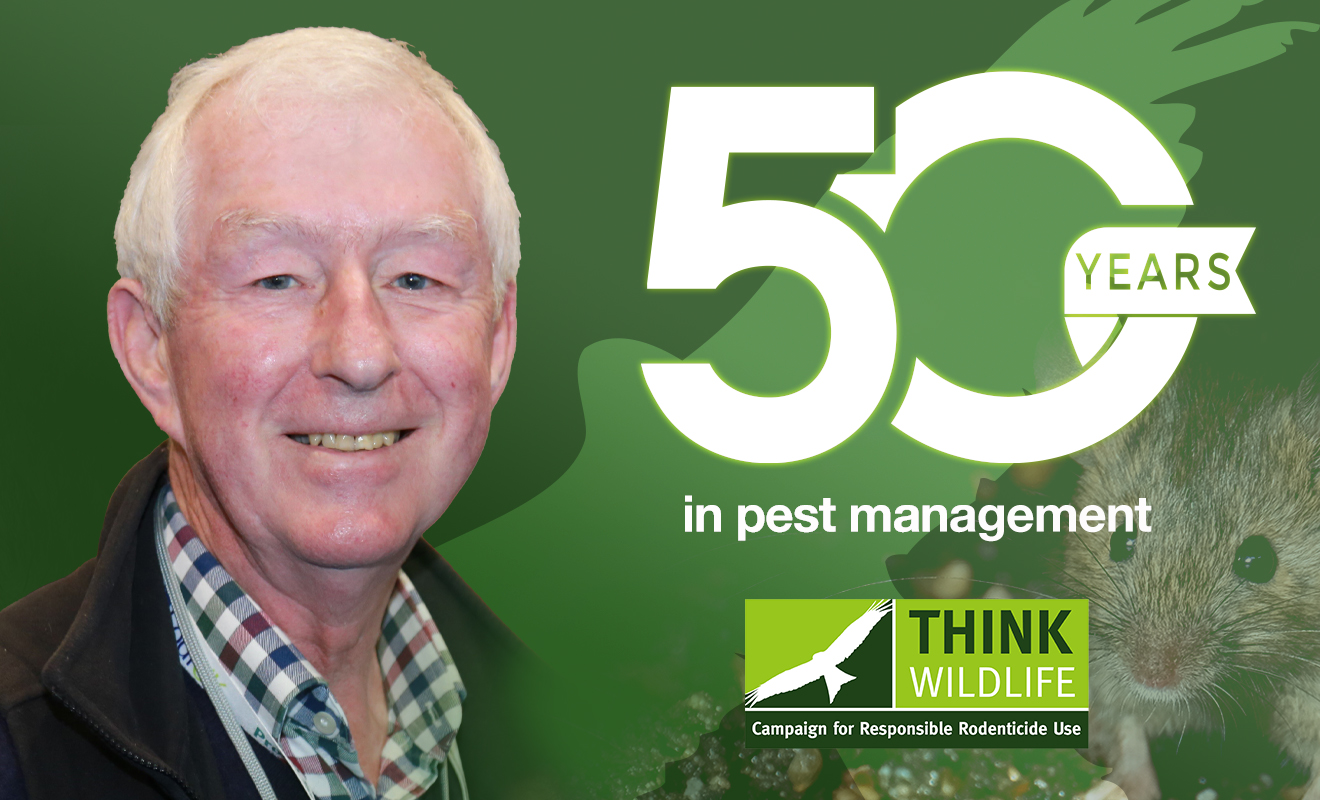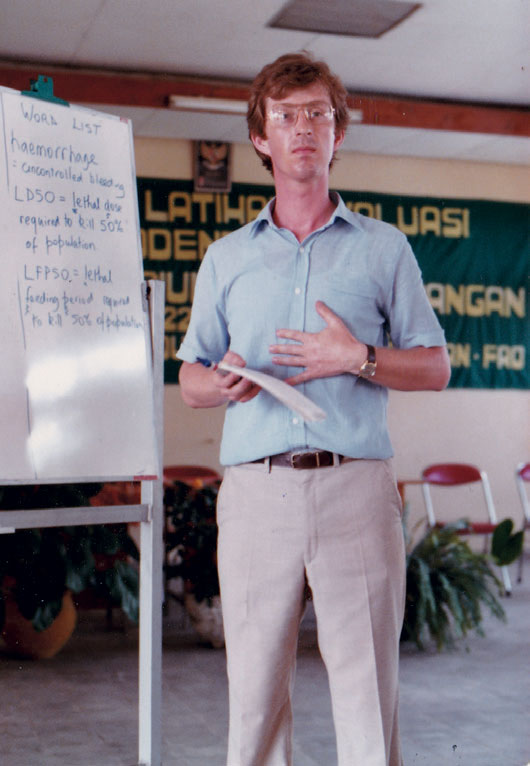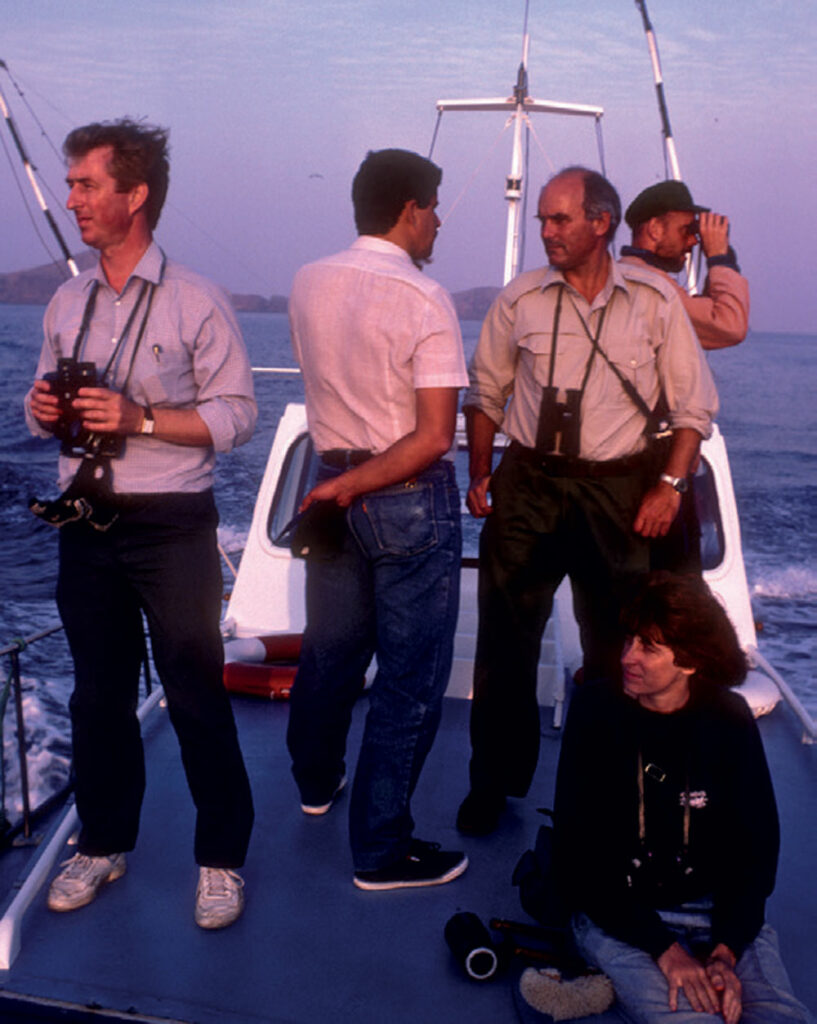
Dr Alan Buckle, Visiting Research Fellow at the University of Reading and Chair of the Campaign for Responsible Rodenticde Use (CRRU UK) reflects with PCN on over 50 years in pest management.
Early research
Having graduated from Royal Holloway College, University of London, with a 1st class honours degree in Zoology, Alan completed a PhD there on the ‘Insect epifauna of British wild small mammals’, tracking marked fleas moving between Wood mice to see who was living with who. Alan’s contributions to pest management began as early as 1973, when he started research at Aston University (Birmingham, UK) that led to the development and commercialisation of a novel technology for mouse control.
Alan met Mary Eastaugh at university. They married in 1974 and celebrate their golden wedding anniversary in July this year. They have two daughters, Laura and Karen, and in spite of Alan’s many and often long absences travelling abroad, Mary ably juggled being a mother to the girls with a successful career as a maths teacher.

Development of key anticoagulants and formulations
Development of key anticoagulants and formulations From Birmingham to the rice of fields of Malaysia…where Alan worked on the control of (Rattus argentiventer) the ‘Rice field rat’. Alan owes his start to Fred Rowe, who was the house mouse specialist in the UK Ministry of Agriculture and his mentor in Malaysia and the UK for ten years.
Seconded to the Malaysian Ministry of Agriculture, his work included damage assessment and damage surveys, field efficacy tests, rodenticide resistance, developing wax blocks and reduced baiting methods for brodifacoum baits, leading to the pulsed baiting concept. On departure for Malaysia, Alan remembers instructions from the project’s boss, David Drummond, pioneer of anticoagulant resistance work in the UK. David said, “If you ever do a project that involves catching a rat and letting it go again, I’ll have you back home before you know what’s hit you.” David was one of the ‘don’t study them get rid of them’ school, that is so different to current thinking.
I think many of us take wax blocks and ‘pulsed baiting’ for granted – now we know some of the history!
Insecticides
While the Global Research and Development Manager at ICI, Alan was responsible for R&D of all formulations of the insecticide active ingredients permethrin, cypermethrin, lambda-cyhalothrin and pirimiphos-methyl. Bringing his expertise to Syngenta in the early 2000’s, Alan led projects on Vector and Professional Pest Management insecticides under the brand name ‘Icon’, which included microencapsulated formulations of lambda-cyhalothrin, wettable powder formulations and treated malaria bednets.
Travels / international reach

Industry stewardship
Development of the UK rodenticide stewardship regime
The development of a stewardship framework was not easy, taking three years of hardwork. There were the conflicting positions and interests of different user groups and the requirements of government to reconcile. Some stakeholders walked out but later came back. Alan led the CRRU team trying to pull it all together and there were countless meetings with usergroup representatives and government, including a meeting with the minister responsible for HSE. Three different proposals went from CRRU to government. Rupert Broome, who was beside Alan thoughout, remembers the first was received with the response ‘be more ambitious’ and the second with ‘almost there’. Finally, a third set of proposals was agreed with HSE and accepted to meet its ‘High Level Principles’ (https://www.hse.gov.uk/biocides/rodenticides.htm) and stewardship could begin.
Implementation of the UK rodenticide stewardship regime
Training and certification
Best practice
Monitoring
A framework of monitoring has also been introduced covering all aspects of the regime, including residues in wildlife, anticoagulant resistance, barn owl breeding and understanding and adoption of best practice.
Strengthening the regime
Finally, what with cobras and cholera, you could be forgiven for thinking that Alan is accident prone! But there’s more! A few years ago he contracted leptospirosis when he scratched his arm working in a garden compost heap that had months earlier been home to a rat. It is a salutary story that Alan stood in front of three NHS doctors, including one in A&E, and told them what he had. All said it was ‘flu and sent him home. Finally, late one night Mary thought she was going to lose him and went to a GP she knew. Antibiotics were immediately prescribed and acquired at an all-night pharmacy. Recovery was very quick after that and blood tests at Porton Down eventually confirmed lepto!





